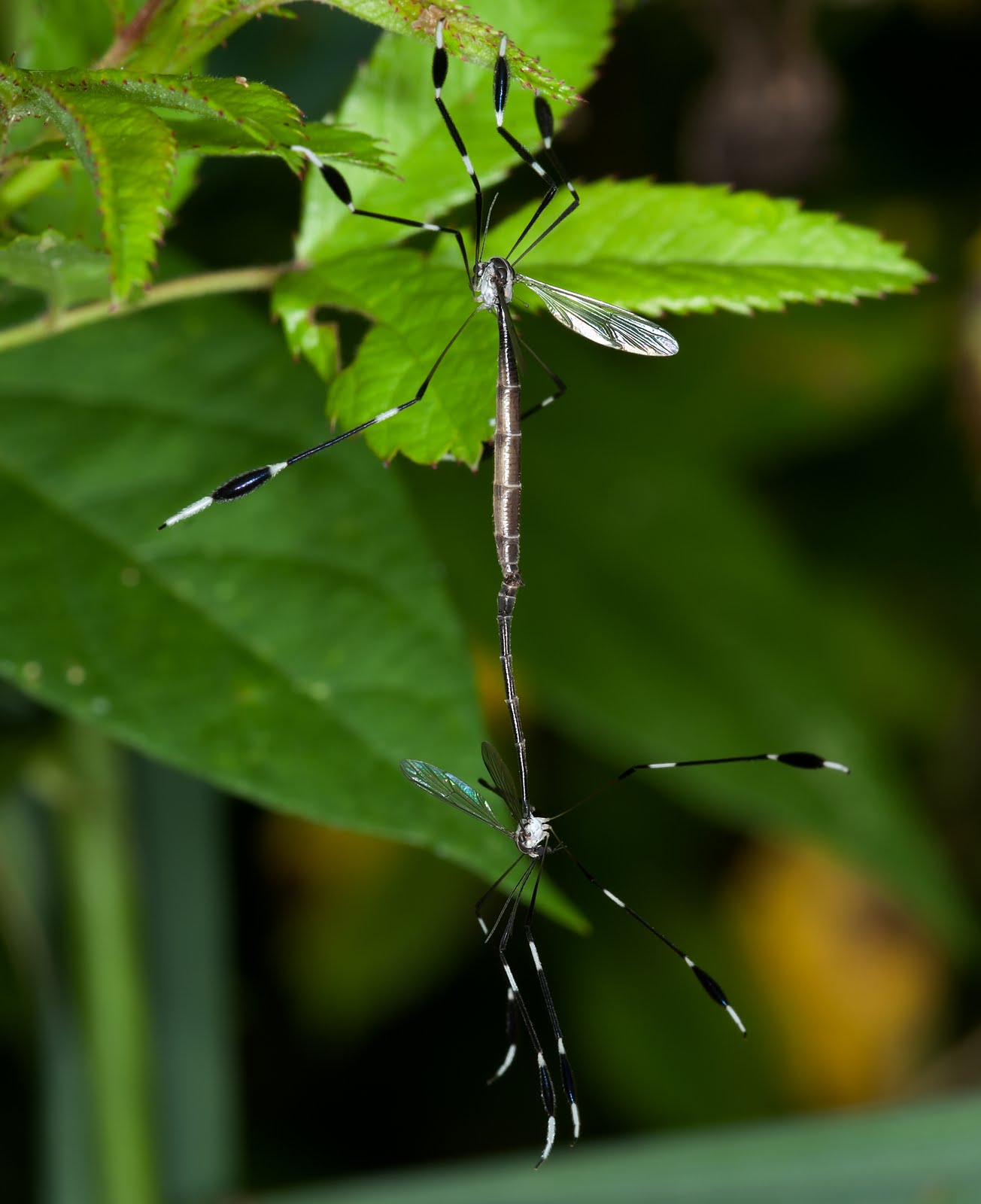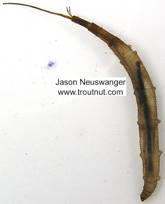
Reproduction
 Reproduction
of this insect requires separate sexes and fertilization is internal. This means
that the first step that has to occur is the
mating between a male and a female as shown in the
photo on the left. Notice that the female is the larger one on
top and the male is the smaller one below. We find it amazing that they can mate in
mid air or hanging down on the surface of a plant.
Additionally, they like to mate near water
(Insects of West Virginia 2009).
Reproduction
of this insect requires separate sexes and fertilization is internal. This means
that the first step that has to occur is the
mating between a male and a female as shown in the
photo on the left. Notice that the female is the larger one on
top and the male is the smaller one below. We find it amazing that they can mate in
mid air or hanging down on the surface of a plant.
Additionally, they like to mate near water
(Insects of West Virginia 2009).
After they mate, the female has to find a place to lay her eggs. The
best place for her to lay her eggs is where there is food and water, so a suitable
environment would be in mud or shallow water filled with lots of
debris. This also helps explain why Phantom Crane Flies like
to mate near water. An adult female can lay over 300 eggs at a time b y
dipping the tip of her abdomen in the mud or water (Insects
of West Virginia 2009). Several days after the eggs settle
to the bottom, they hatch into small worm-like larvae. Since
the larvae are in water, they need to breathe through a long
respiratory tube called a siphon
(Insects of West Virginia 2009). The picture on the right
shows a larva with a
long, thin siphon sticking out from its abdomen. The larvae grow by
eating the debris and organic matter in their surrounding
environment. Eventually, they transform into pupae. After a period of time, the pupae slowly develop into adult flies
that are a little less than 16mm in length
(Podenas, S. 2007).
y
dipping the tip of her abdomen in the mud or water (Insects
of West Virginia 2009). Several days after the eggs settle
to the bottom, they hatch into small worm-like larvae. Since
the larvae are in water, they need to breathe through a long
respiratory tube called a siphon
(Insects of West Virginia 2009). The picture on the right
shows a larva with a
long, thin siphon sticking out from its abdomen. The larvae grow by
eating the debris and organic matter in their surrounding
environment. Eventually, they transform into pupae. After a period of time, the pupae slowly develop into adult flies
that are a little less than 16mm in length
(Podenas, S. 2007).
Return Home | Back | Next